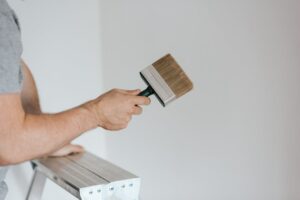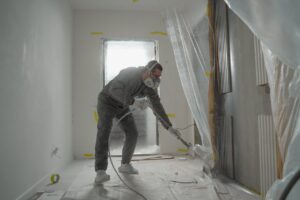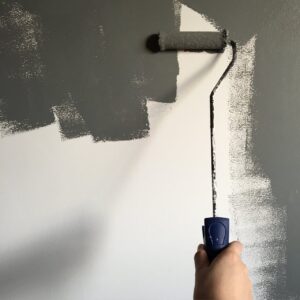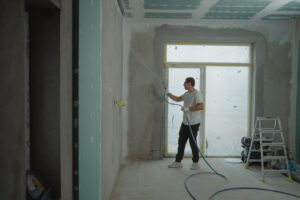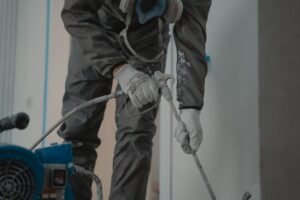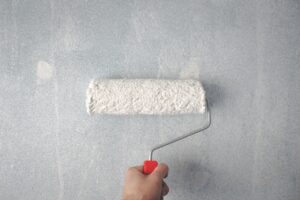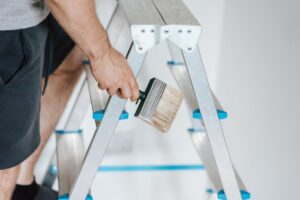
The Hidden Dangers of DIY Drywall Repair: What to Watch Out For
DIY drywall repair may seem like a cost-effective idea, but it comes with hidden dangers such as seams, holes, fasteners, and sand. Understanding the risks, cost, and knowledge associated with tackling such projects is crucial. Before diving into DIY drywall repair, having knowledge about holes and cost can save both time and money in the long run. From dealing with inch-sized holes to knowing how to address problem areas, technicians must be aware of these pitfalls for a successful outcome. In this post, we’ll explore the addition of insight into these potential hazards, such as holes, and provide valuable tips on navigating through them effectively. Understanding Drywall Repair Risks Health Hazards DIY drywall repair of holes poses health hazards due to exposure to harmful substances like dust and mold. Breathing in drywall dust from inch-sized holes can lead to respiratory issues and other health problems. It’s crucial to take proper precautions, such as wearing a mask and using adequate ventilation, to protect your health during the repair process. Exposure to mold during DIY drywall repair can also pose significant health risks when repairing a hole. Mold spores released during the repair process can cause allergies, asthma exacerbation, or even more severe respiratory conditions. Therefore, it’s essential to inspect for any signs of mold growth before initiating any repairs. Breathing in drywall dust Exposure to mold spores Proper precautions: mask and ventilation Structural Concerns One of the risks associated with DIY drywall repair is overlooking underlying structural issues that require professional attention. Ignoring these concerns could lead to further damage and costly repairs down the line. Always assess the structural integrity of the wall before attempting DIY repairs; this ensures that any hidden issues are addressed promptly. For instance, a small crack on the surface might indicate more extensive damage within the wall structure itself. Failing to address these underlying problems may result in recurring issues or even compromise your home’s stability over time. Overlooking structural issues Assessing structural integrity Potential hidden damages Quality Assurance Achieving professional-quality results with DIY drywall repair can be challenging due to lack of experience and skill which may result in subpar finishes and visible imperfections. Considering hiring a professional for better quality assurance is advisable as their expertise ensures long-lasting results compared with amateur attempts at repairing drywalls. Professional contractors possess specialized tools and techniques that enable them not only fix existing damages but also prevent future ones from occurring through high-quality workmanship. Recognizing Common Drywall Damage Water Damage DIY drywall repair without addressing water damage can lead to recurring issues. Moisture trapped behind repaired walls can cause mold growth and further deterioration. Properly identifying and addressing water damage is crucial for successful drywall repair. For example, if a leaky roof has caused water damage to the ceiling drywall, simply patching the affected area without fixing the source of the leak will result in ongoing problems. Structural Cracks Failing to address underlying causes of cracks can result in recurring issues after DIY repairs. Superficially repairing cracks without fixing their root causes may lead to further wall damage. Understanding the different types of structural cracks is essential for effective DIY repair. For instance, vertical cracks could indicate a settling foundation issue that needs professional attention rather than just a simple patch-up job. Cosmetic Issues DIY drywall repair may result in visible seams, uneven textures, or mismatched paint. Achieving a seamless finish requires skill and experience that may be lacking in DIY projects. Consider the potential cosmetic issues before attempting DIY drywall repair. In some cases, even if you manage to fix a hole or crack properly, blending it seamlessly with the rest of the wall’s texture and color might prove challenging without professional expertise. The DIY Drywall Repair Process Essential Tools Having the right tools is crucial. Basic items like a utility knife, taping knife, and sanding block are essential for the job. Investing in quality tools can make the repair process smoother and more efficient. For instance, using a high-quality taping knife ensures that the drywall tape adheres properly without creating air bubbles or wrinkles. It’s important to have a good-quality utility knife for precise cutting of drywall tape and joint compound application. These tools not only facilitate the repair process but also contribute to achieving a professional-looking result. Repair Steps Understanding the step-by-step process of drywall repair is vital for DIY success. Properly preparing the damaged area by removing loose debris and applying self-adhesive mesh tape or paper tape before adding joint compound is crucial. Sanding down any excess compound ensures a smooth finish. Following these steps systematically results in an even surface that seamlessly blends with surrounding walls, preventing noticeable imperfections after completing the DIY drywall repair project. Finishing Touches Paying attention to finishing touches like feathering edges and blending textures is important. Neglecting these details can result in visible imperfections after completing your project. Taking time during this phase will help achieve a seamless transition between repaired areas and existing walls, ensuring an aesthetically pleasing outcome. Identifying Poor Drywall Work Visual Inspection Before starting any DIY drywall repair, it’s crucial to conduct a thorough visual inspection of the damaged area. Look for signs of water damage, mold growth, or structural issues that may require professional intervention. By doing this, you can ensure that all necessary repairs are addressed during the project. For instance, if there are indications of water damage behind the drywall, it’s important to address the source of the issue before making any repairs. A careful examination helps in identifying any hidden damage that might not be immediately visible. This could include underlying structural issues or compromised integrity due to previous poor repair work. By being vigilant during your visual inspection, you can avoid overlooking critical problems and ensure a comprehensive approach to your DIY drywall repair project. Texture Matching One common challenge with DIY drywall repair is matching the texture of repaired areas with existing walls. Achieving an accurate match can be tricky for inexperienced individuals. Different techniques

